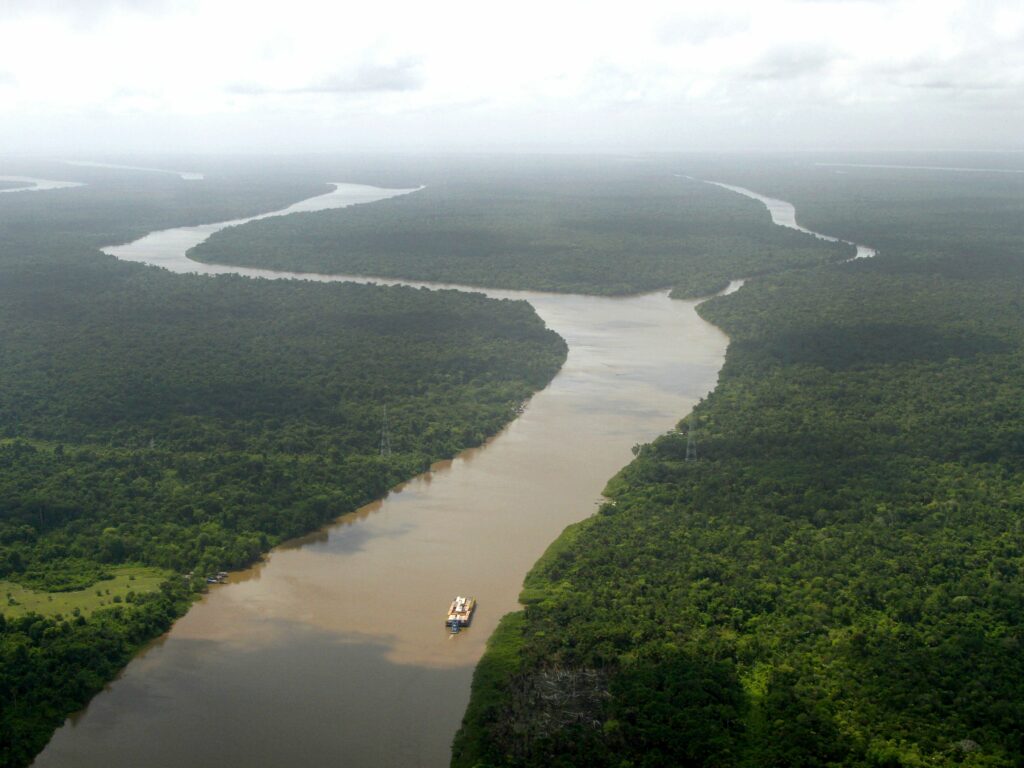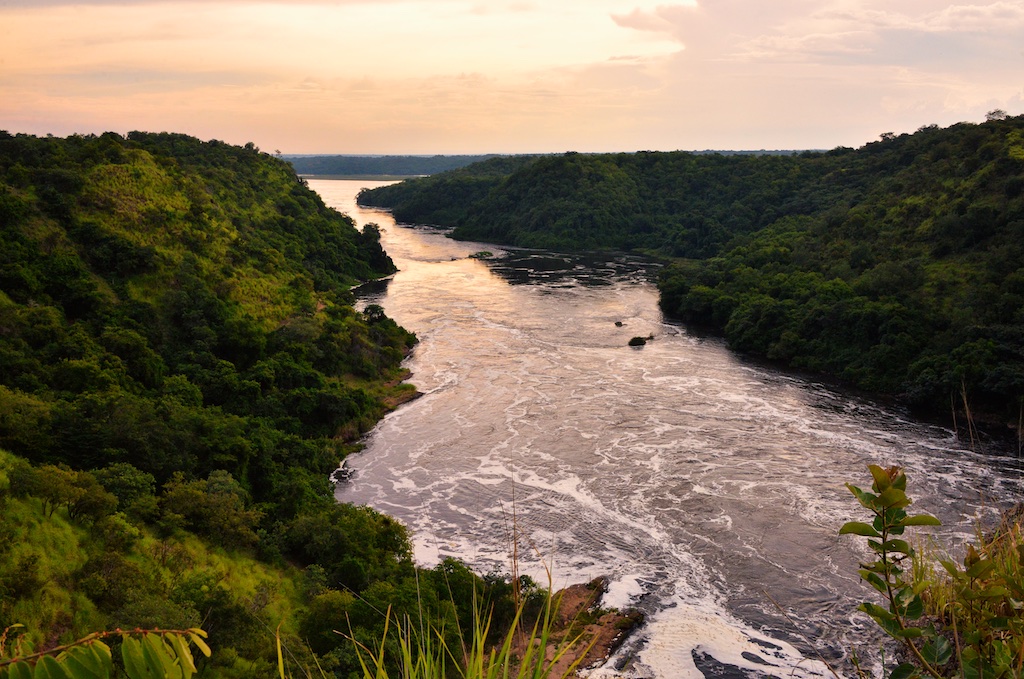Table of Content
- Overview
- Amur River
- The Congo
- Paraná River
- Ob River
- Yellow River
- Yenisei River
- Mississippi River
- Yangtze River
- Amazon River
- The Nile
Overview
Rivers are natural watercourses, usually freshwater, flowing towards the ocean, sea, lake, or another river. A river may flow into the ground without reaching another body of water at the end of its course.
Environmentally, rivers play a crucial role in providing water sources to habitats of millions of species while also being the very habitat of some species. As water promotes growth and sustains all life, rivers play crucial roles in our lives.
Today, we’ll be exploring the top 10 longest rivers in the world. Read on to learn more.
10. Amur River
Region: China – Russia
As the longest undammed river in the Eastern Hemisphere, the Amur River stretches 1,755 miles along the border between eastern Russia and northern China. Originating near the sacred mountain of Burkan Khaldun in northeastern Mongolia, where Genghis Khan was born, this river flows eastward to the Strait of Tartary. Besides serving as a symbol of bilateral relations between China and Russia, the river also spans five different ecosystems, from grasslands and boreal forests to deserts and tundras.
It is possible to take a tour of the Amur River and see Nanay and Ulchi communities that live along the river. There are also picnics and fishing on the coast of the Amur included in the packages offered by several tour operators
Alternative names for the river include “Heilong Jiang”, meaning “Black Dragon River” in Chinese and “Kharamuren” which means “Black River” in Mongolian.
9. The Congo
Region: Arica
With a length of 2,290 miles, the Congo is the ninth longest river in the world, and it has the deepest water depth in the world, exceeding 720 feet. The river winds through Angola, Tanzania, Cameroon, Zambia, Burundi, and Rwanda, as well as the Democratic Republic of Congo, the Central African Republic, the Republic of Congo, and the Democratic Republic of Congo. In a recent New York Times post, it was noted that the Congo River originates in eastern Africa, and it takes almost six months for its waters to flow into the Atlantic Ocean.
Formerly known as the Zaire River, it is the only river that crosses the equator line twice in its path. At the Malebo Pool, Kinshasa and Brazzaville, the capital cities of the Democratic Republic of the Congo and the Congo Republic are located on opposite sides of the river.
The Congo Basin is also known as one of the most species-rich rivers on the planet with it being the home to over 13,000 species of fishes, plants, mammals and birds.
8. Paraná River
Region: Brazil, Paraguay and Argentina
Through Brazil, Paraguay, and Argentina, the Paraná River flows for 3,032 miles before merging with the Paraguay River and finally with the Uruguay River to form the Rio de la Plata. From there, it empties into the Atlantic ocean.
As the second largest river system in South America after the Amazon, the Paraguay-Paraná system stretches almost 1 million square miles.
The largest hydroelectric power station in the world, Itaipu Dam, lies along the Paraná, creating a massive reservoir behind it.
Paraguay, southern Brazil, northern Argentina, and even Bolivia are surrounded by the Paraná river and its tributaries, forming a major watershed that covers much of the south-central part of the continent.
7. Ob River
Region: Russia
In addition to its major tributary, the Irtysh, the Ob River extends for 3,364 miles, making it the world’s seventh longest river. The Ob River originates in the Altay Mountains of southwest Siberia and empties into the Arctic Ocean. A vast region of Siberian wilderness was connected to the Ob by the Ob, which was, and still is, mostly used for irrigation, drinking water, hydroelectric power, and fishing.
As the river crosses its banks, the Trans-Siberian Railway crosses Novosibirsk, the third-largest city in Russia and the largest city in Siberia. Not only that, the Gulf of Ob is said to be the longest estuary in the world.
The huge basin of the Ob stretches across a number of natural zones, with semidesert in the far south and steppe grassland in the north.
Rich meadows extend for many miles along the banks of the Ob River, and many trees grow there, including willow, snowball trees, bird cherry, buckthorn, and wild roses. Over 50 species of fish live in the river or in the gulf, including sturgeon, nelma, muksun, tschirr, and peled. The seasonal ice cover kills many fish every winter.
6. Yellow River
Region: China
The Yellow River, which rises in southern Qinghai province and flows through six other provinces and two autonomous regions, is the second longest river in China and the third largest river basin in China. In terms of length, the Yellow River is sixth in the world with an estimated length of 3,395 miles.
Historically, this great river is known as the “Mother River of China,” as it has laid the foundation for Chinese civilization and is considered a spiritual home for the Chinese people. Named after the murky, yellow color of its water, it also houses the world’s largest “Yellow Waterfall” near the middle reaches of the river. It is called Hukou Waterfall, which means tea kettle in Chinese because the eroding river bed there has formed an enormous teapot-shaped spout that looks to be pouring “yellow” water.
5. Yenisei River
Region: Russia
Over a million people live along the 3,443-mile Yenisei River, which provides power, transportation, food, sport, and more to more than a million residents along its route to the Arctic Ocean. Freshwater Ecoregions of the World reports that it is the fifth longest river in the world, and that it contains 55 native fish species, including two endemics: Gobio sibiricus and Thymallus nigrescens, both of which are graylings.
A large part of central Siberia is drained by the Yenisey River, which divides the Western Siberian Plain and the Central Siberian Plateau. The road traverses a huge area that is marked by strikingly diverse landscapes and was home to ancient peoples, ancient customs, as well as an enormous economic infrastructure. Approximately 500 smaller rivers connect to this river. Due to it having a subarctic climate in its northern part, a large portion of the river stays frozen for much of the year.
4. Mississippi River
Region: America
Flowing 2,350 miles from its source at Lake Itasca to the Gulf of Mexico, the Mississippi River is the third longest river in America. This combination of the Mississippi and Missouri Rivers is the fourth-longest river in the world, spanning 3,710 miles. There is no doubt that the Mississippi River is one of the most iconic waterways of North America and a haven for the environment as well. It is estimated that the Mississippi River Delta contains a variety of habitats, including uplands, open waters, cypress forests, freshwater marsh, brackish marsh, salt marsh, sandy beaches, and everything in between, according to the National Wildlife Federation.
In the 18th century, the Mississippi River acted as the main western boundary of the young nation, and ever since the country expanded westward, the river has served as a convenient dividing line between the western regions of the country and the eastern, southern, and midwestern regions.
With its widest point being over 11 miles long at Winnibigoshish, near Bena Minnesota, this river is also the birthplace of the water skiing sport. The river also flows through ten U.S. states and it takes three months for the water to travel the entire length of the river.
3. Yangtze River
Region: China
Yangtze River has a length of 3,915 miles, making it the third longest river in the world, the longest river within the Asian continent and the longest river that flows entirely through one country.
Aside from its cultural, historical, and economic importance, it’s also China’s biggest water system. In 1950, the river and its basin became the focal point of much of China’s economic modernization, with about 400 million people living along its banks, or one-third of the country’s population.
In general, people consider the Yangtze to be a dividing line between North and South China due to the Three Gorges Dam on the river. A wide range of natural ecosystems are created along its path between the Tibetan Plateau and the East China Sea near Shanghai, providing vital habitat for species such as snow leopards, giant pandas, and Yangtze finless porpoises.
The river is also the former home of the Yangtze sturgeon, the Yangtze dolphin (or baiji), and the Chinese paddlefish, all of which are now extinct. The name Yangtze, derived from the ancient fiefdom of Yang, is mainly referred to by westerners as the Yangtze River. There are several names for the river in China, including Chang Jiang (“Long River”), Da Jiang (“Great River”), or Jiang ( “River”).
2. Amazon River

Region: Brazil, Colombia, Peru
The Amazon River is the greatest river in South America and the largest drainage system in the world. It flows from the Andes Mountains to the Atlantic Ocean and is at least 4,000 miles long, making it the 2nd longest river on our list.
Biodiversity is abundant on the Amazon River, making it the richest river in the world. There are 2,500 species of fish in its waters (although scientists believe there are many more yet to be discovered), according to Discover Peru. It also houses endangered wildlife like the pink dolphin of the Amazon River, squirrel-sized tamarin monkeys, and three-toed sloths.
The Amazon basin is the largest lowland in Latin America and includes the greater part of Brazil and Peru, significant parts of Colombia, Ecuador, and Bolivia, and a small area of Venezuela. The Amazon River dilutes the ocean’s saltiness for more than 100 miles from shore.
The Amazon River was named by a Spanish soldier who described battles with its tribes of female warriors whom he associated with the Amazons, a race of female warriors in Greek mythology.
1. The Nile

Region: Africa
The Nile River is the world’s longest river, stretching 4,132 miles through northern Africa.
The great river flows from south to north, passing through ten countries, Uganda, Ethiopia, Sudan, South Sudan, the Democratic Republic of Congo, Kenya, Tanzania, Rwanda, Burundi, and ends in Egypt. Essentially, it is the “artery” of Africa. The Nile River flows through countries that are home to more than 300 million people. According to Reuters, the Nile Basin supports 40 percent of Kenya’s population, despite only covering a tenth of the semi-arid country.
The name Nile is derived from the Greek Neilos (Latin: Nilus), which means a valley or a river valley. The Nile flows from the south northward and is in flood at the warmest time of the year. The term Nile may be related to the term Nil, which refers to Indigofera tinctoria, or to Nymphaea caerulea, which was found scattered over Tutankhamun’s corpse when it was excavated in 1922.
In the ancient world, advanced civilizations developed and decayed in the Nile River basin. It is bordered on the north by the Mediterranean, and on the east by the Red Sea Hills.
The Nile River was a crucial source of sustenance for the Ancient Egyptians, who traded wheat, flax, papyrus, and other crops around the Nile to secure Egypt’s diplomatic relationships with other countries and contribute to economic stability. The Nile also symbolized the passage between life and death and the afterlife for ancient Egyptians, and the east represented birth growth, and death while the west represented death. Overall, the river is of high importance culturally, historically, economically and also envioronmentally.







